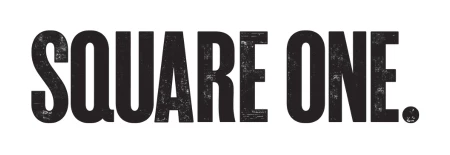Partner Article
Going green? Don?t follow the crowd
One of my biggest frustrations is the way almost every new green campaign in organisations looks just like all the others. We get the clichéd green imagery of hands cupping saplings or polar bears on melting ice. We get the networks of environmental champions. We get the lengthy Powerpoint presentations of graphs and pie charts. And this turns into frustration for the co-ordinator whenit fails to make an impact – the imagery goes unnoticed, the champions network withers on the vine and the presentations get forgotten.
So why does all this fail? Simple. It is all produced from a green point of view rather than from your colleagues’ point of view and is therefore irrelevant to their day-to-day experience. My approach, which I call Green Jujitsu, approaches the problem from the other direction. If the normal approach is like boxing –trying to batter the other guy into submission in a war of attrition – Green Jujitsuuses that martial art’s approach of working to the other guy’s strengths and momentum.
This might sound wishy-washy, but it is nothing of the sort. I do a lot of work with large engineering and manufacturing companies. I’m an engineer and I know that trying to make engineers feel guilty about what they do is both pointless and, I would argue, somewhat unethical. Instead I frame environmental vissues in engineering terms. We explore the company’s environmental issues, the business case for tackling them and then start generating solutions. Problem solving is deeply embedded in the psyche of engineers, so they roll up their sleeves and get stuck in. “We can do this!” becomes the vibe, much moreb powerful than “Pity the polar bear.”
Another fatal flaw in the standard approach is to expect employees to go the extra mile for the environment, sometimes almost literally when it comes walking past lots of mixed waste bins to the recycling bin at the end of the corridor. No wonder trying to persuade them is so difficult. Green Jujitsu attempts to flip this around by removing all the barriers to green behaviour and putting disincentives on the way of ungreen behaviour. This can be as simpleas giving everyone a paper recycling bin and moving the mixed waste bin to the remote location. This same principle can be applied to everything from factory layouts to travel booking schemes.
I mentioned environmental champions in my introduction because I have very rarely seen a network of voluntary environmental champions which is flourishing. On the contrary I have seen the role abused – from giving champions formal energy reduction targets to making them read meters – no wonder champions tend to lose enthusiasm. The fundamental problem is that you are creating a bolt-on structure to your organisation with no authority to do what itis meant to do. Green Jujitsu says that if you have a functioning formal reporting structure, then you should use that to deliver your green goals. Give the targets to those with the authority to deliver them.The one thing that constantly surprises me is how many people adopt the ‘normal’ approach to green campaigns without any proof that they work.The programmes I have seen which do work use the Green Jujitsu approach anddesign programmes tailored to their existing company culture. So don’t follow the crowd, make green work for you.
This was posted in Bdaily's Members' News section by Gareth Kane .
Enjoy the read? Get Bdaily delivered.
Sign up to receive our popular morning National email for free.








 The real cost of tendering for construction SMEs
The real cost of tendering for construction SMEs
 A welcome step forward – but let’s keep pushing
A welcome step forward – but let’s keep pushing
 Industrial strategy 'can drive business forward'
Industrial strategy 'can drive business forward'
 Industrial strategy 'can be game-changer we need'
Industrial strategy 'can be game-changer we need'
 Driving skills forward with near £100,000 boost
Driving skills forward with near £100,000 boost
 What pension rule changes could mean for you
What pension rule changes could mean for you
 North East can't be an afterthought in AI future
North East can't be an afterthought in AI future
 Understanding the impact of the Procurement Act
Understanding the impact of the Procurement Act
 Is the UK losing ground in life sciences investment?
Is the UK losing ground in life sciences investment?
 Construction workforce growth can't be a quick fix
Construction workforce growth can't be a quick fix
 Why it is time to give care work a makeover
Why it is time to give care work a makeover
 B Corp is a commitment, not a one-time win
B Corp is a commitment, not a one-time win